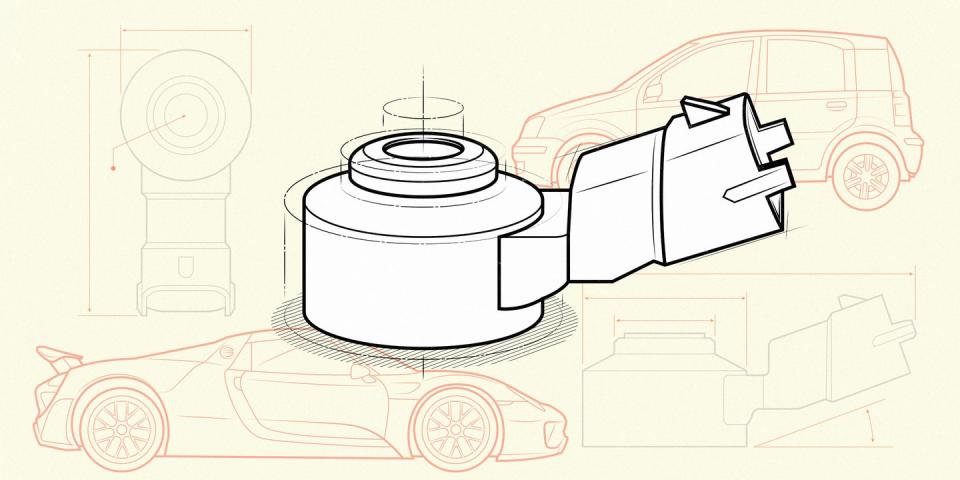The Crucial Part Shared by the Fiat Panda and Porsche 918 Spyder

We tend to think of limited-production hypercars like the hybrid-powered Porsche 918 Spyder as exclusive vehicles made of bespoke, top-shelf parts. That may not always be the case. While you won’t find the 918’s 4.6-liter naturally aspirated V-8 in any other road-going cars, that mighty engine shared one crucial part with a whole bunch of far more pedestrian machines—including the Fiat Panda.
Welcome to The Parts Department, where we follow basic car components to their strangest destinations.
Auto industry supplier Bosch makes a variety of engine knock sensors, including part no. 0-261-231-173. Like the rest of the knock sensors in Bosch’s lineup, this one gets bolted to an engine block to detect unusual vibrations that can signal that the engine is experiencing detonation or “knock.” When knock is detected, the engine computer adjusts fueling or timing in order to prevent catastrophic engine damage. It’s part of the safety blanket of engine programming that keeps everything running ideally. That programming is highly specific to each application, but the knock sensor itself can be installed on a wide variety of engines.
The sensor itself is small and compact, with a head that sticks out less than ¾ of an inch from the engine block that it’s bolted to, and it weighs just 1.7 ounces. That tiny size allows it to be installed on a variety of applications, from the 875-cc, 84-hp turbo two-cylinder in the third-generation (2011 to present) Fiat Panda to the 918 Spyder’s V-8. The robustness of this small sensor also allows it to work in a wide variety of applications: The sensor can detect vibrations of up to 800 m/s2 while operating at temperatures as low as -40 degrees F or as high as 302 degrees. It’s also rated at IPX9K, currently the highest rating for water ingress protection.
The knock sensor itself is contained within the circular housing; the protrusion is where the wiring harness plugs in.
According to current parts catalogs, the earliest variant of this sensor appeared in the 986-generation Porsche Boxster and 996-generation Porsche 911 of the late Nineties. It next showed up on the 79-hp 1.2-liter four-cylinder in the second-generation 1999 Fiat Punto. From there, it spread to much of the Fiat lineup, including the lowly two-cylinder Panda, and in the early 2000s made its way to cars including the Lancia Thesis and Opel Corsa.

 Yahoo Autos
Yahoo Autos 